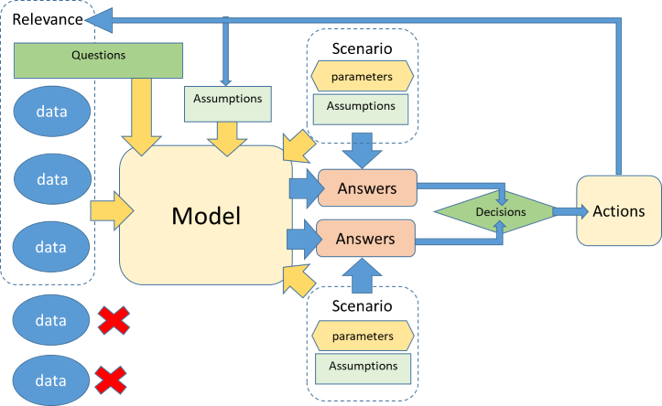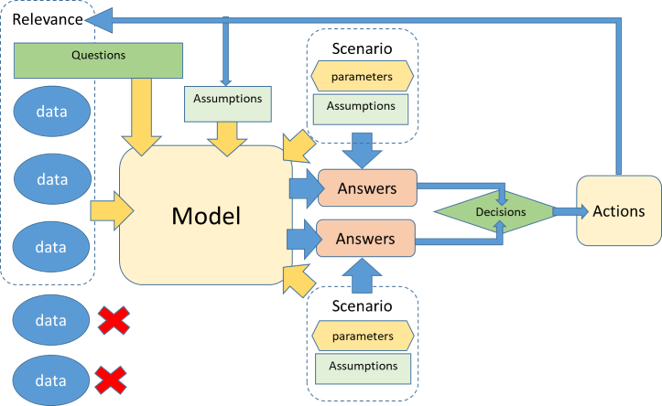Models, assumptions and making decisions
Blog: The Knowledge Economy

Mathematical models provide a description of a system using mathematical concepts and language. Models explain how a system operates and predicts its behaviour with changing parameters and assumptions .
Mathematical models answer questions. In particular those relevant to ‘ What if‘ scenarios.
Models can describe:
- How a business performs using different operating frameworks.
- How finances change with different assumptions.
Or :
- How a pandemic affects a population.
When building a model you need to establish what questions need answering. Unless you have specific questions what is the point?
A mathematical model is only as good as its data and the assumptions used. With poor, incomplete or irrelevant data the validity of a model is questionable.
A model builder must not fall into the trap of wanting to support a predefined answer. A biased model includes data or facts that might support a particular conclusion and excludes data and facts that are non supportive. The phrase”Lies, damned lies, and statistics” describes how numbers can be manipulated to support an otherwise weak argument. Manipulating a model to force it to give that answer you want rather than an accurate answer leads to erroneous decisions.
A good model is only a reflection of reality. It is unlikely to include all things that impact it. Validation of the model occurs against the real world observations. Refinement ,where contradictory observations exist, is a reiterative process.
In the case of a pandemic possible questions could be:
- What would be the impact of doing nothing?
- Which scenarios result in the medical system collapsing?
- How long before we can ease up on restrictions?
- What if we relax restrictions too early?
- What if we move from suppression to elimination?
- What if no vaccine is developed?
- What if no immunisation is acquired after infection?
Models are valuable tools in the the decision making process.
The post Models, assumptions and making decisions appeared first on The Knowledge Economy.
Leave a Comment
You must be logged in to post a comment.








